How to grow Nemesia
Hailing from South Africa, nemesia is a compact, bushy plant grown for its masses of miniature snapdragon-like flowers and exceptionally long blooming period. The many hybrids and cultivars now available offer gardeners a kaleidoscopic range of colours.
The nemesia we stock are either tender perennials usually treated as annuals, or hardy, short-lived perennials. In either case, taking cuttings is a good idea to ensure a ready supply of fresh new plants (see ‘How to propagate nemesia’ section below).
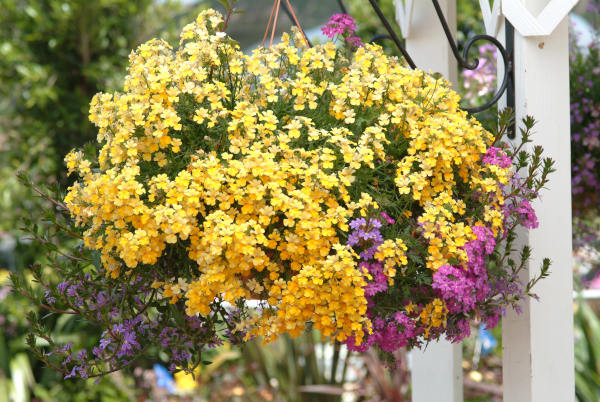
Zantedeschia is a genus of flowering plants from the family Araceae and is native to southern Africa. With a rich history dating back to the Ancient Romans, these deciduous or semi-evergreen perennials have been used as a symbol of celebration. Zantedeschia was Named after Professor Giovanni Zantedeschia, an Italian botanist.
There are two main forms of Zantedeschia: hardy and tender. Hardy forms of the plant can be grown outdoors, enjoy moist soil and full sun or partially shaded conditions - these are known as Arum lilies. Tender forms of Zantedeschia prefer being grown in containers or pots and should be brought inside over the winter - these are known as Calla lilies.
With tuberous flora in all colours from whites, yellows and oranges to deep reds and purples, Zantedeschias are not to be overlooked in any garden, as long as they have sufficient sunlight to grow in.
Ready to learn more about growing Zantedeschia? Read on for all there is to know...

Key Information
Soil pH
Position
Hardiness

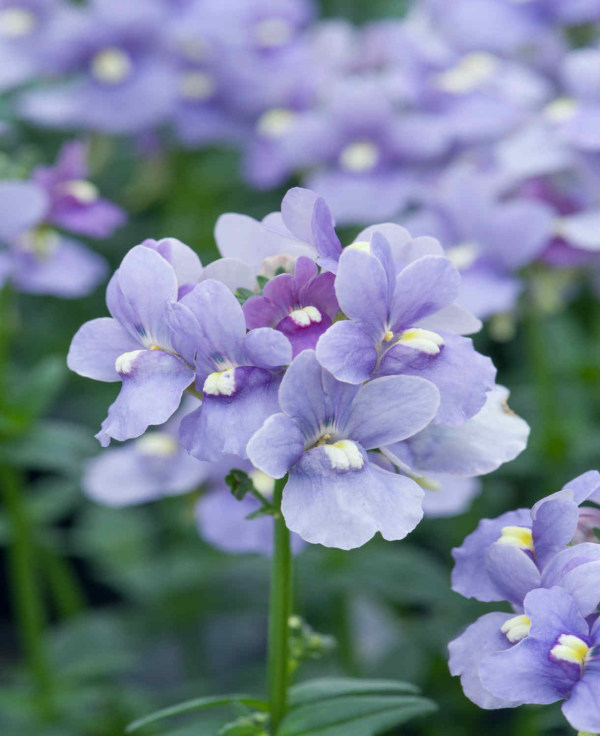
Where & when to plant Nemesia
Position - Full sun
Soil - Moist, well-draining, moderately fertile, slightly acidic
Flowering Period - Spring to early autumn
Hardiness - Ranging from tender to hardy (check individual description for details)
Our nemesias are available from spring as young plants. If they arrive before the last risk of frost has passed in your area (generally around mid to late May), pot them up and keep in a cool, frost-free environment such as an unheated conservatory or greenhouse until it is safe to move them outside. This is advisable even for the hardier varieties, which remain vulnerable to frosts when young and newly planted.
Of the many nemesia hybrids and cultivars, some are bushy and therefore suited to containers and border edges, while others have a trailing habit and are intended for hanging baskets or spilling over a wall. In all cases, a requirement for full sun and well-draining soil is the key to a healthy, thriving plant.
How to plant Nemesia
In a container
- Pinch out the growing tip of your plant, snipping it off just above a slightly lower set of leaves. This will encourage it to become bushier and more floriferous.
- Choose an appropriate container. We recommend a pot with a top diameter of approximately 30 – 40cm, or you may wish to combine with other plants in a larger container. Ensure there are plenty of drainage holes in the bottom.
- Use a good quality potting compost with plenty of horticultural grit mixed in, and, if not already present in the compost (check the description on the bag) some slow-release fertiliser granules.
- Start by partially filling the pot with compost; enough so that when placed on it the upper surface of the root ball is about 3cm lower than the top of the pot.
- Infill all the space surrounding the root ball with compost, firming down with your fingers then adding a little more so the plant is held tight.
- Pick up the pot (if you can!) and lightly tap on the potting bench or ground a few times to help further settle the compost around the plant.
- Soak well with water.
- A mulch with horticultural grit will look attractive and help to prevent a ‘cap’ or crust forming on the top of the compost (something container plants can suffer due to the artificial nature of their watering).
In the ground
- Pinch out the growing tip of your plant, snipping it off just above a slightly lower set of leaves. This will encourage it to become bushier and more floriferous.
- Clear the chosen area of weeds.
- Dig a planting hole several times larger than the root ball. If you are gardening on soil that is poor, dry, or stony it is a good idea to mix in some well-rotted organic matter at this stage. Avoid heavy, clay soil.
- Place the plant in the hole, ensuring the top of the root ball sits level with the surface of the soil. Too low and the plant may rot, too high and the roots can dry out.
- Backfill with soil and firm in gently.
- Soak well with water.
- Mulch around the base with well-rotted organic matter.
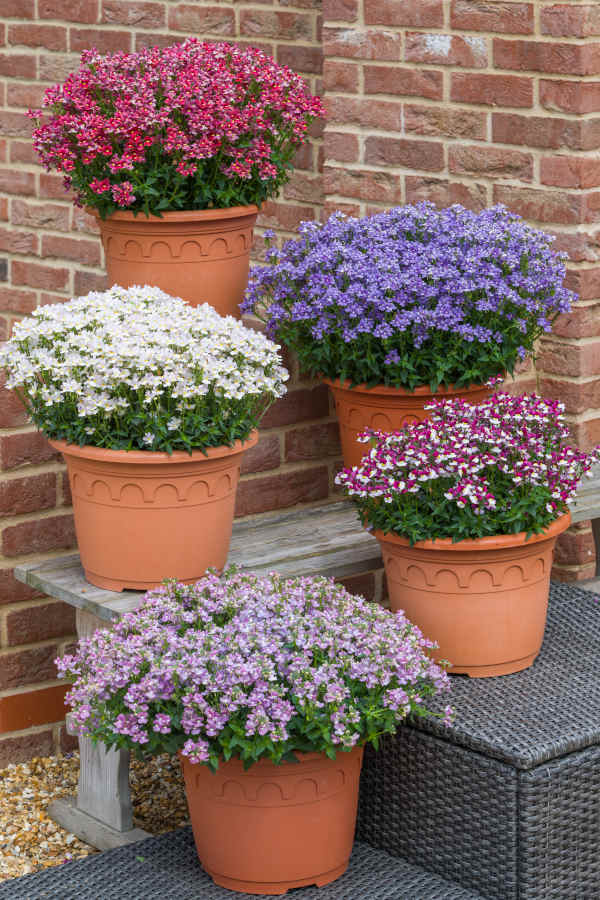
What to plant with Nemesia
This long flowering and delicate plant fits easily in a range of planting styles. For an easy yet impressive display combine it with other seemingly never-ending bloomers, such as gaura, diascia, geranium, erigeron, potentilla, penstemon, and erysimum.

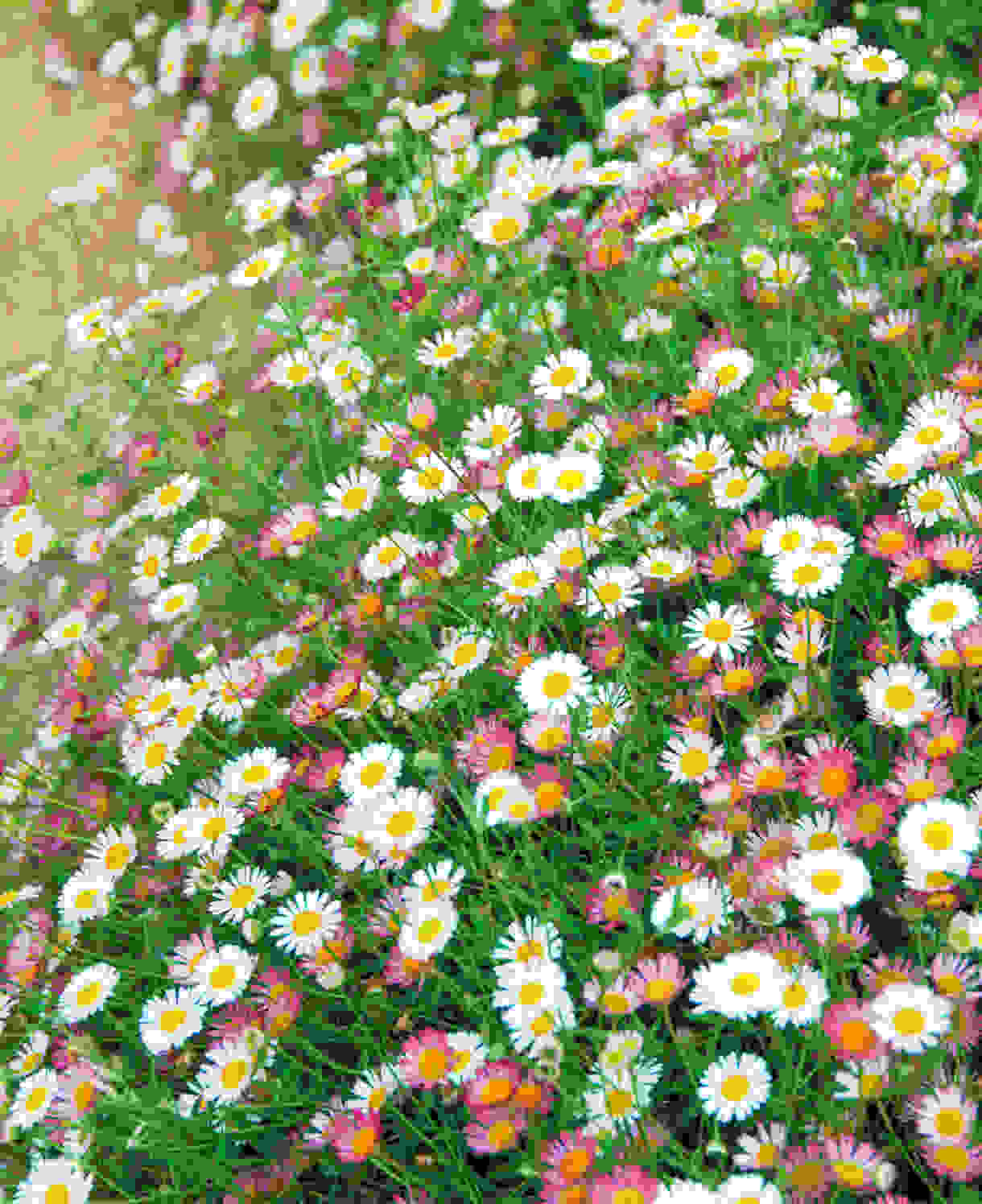
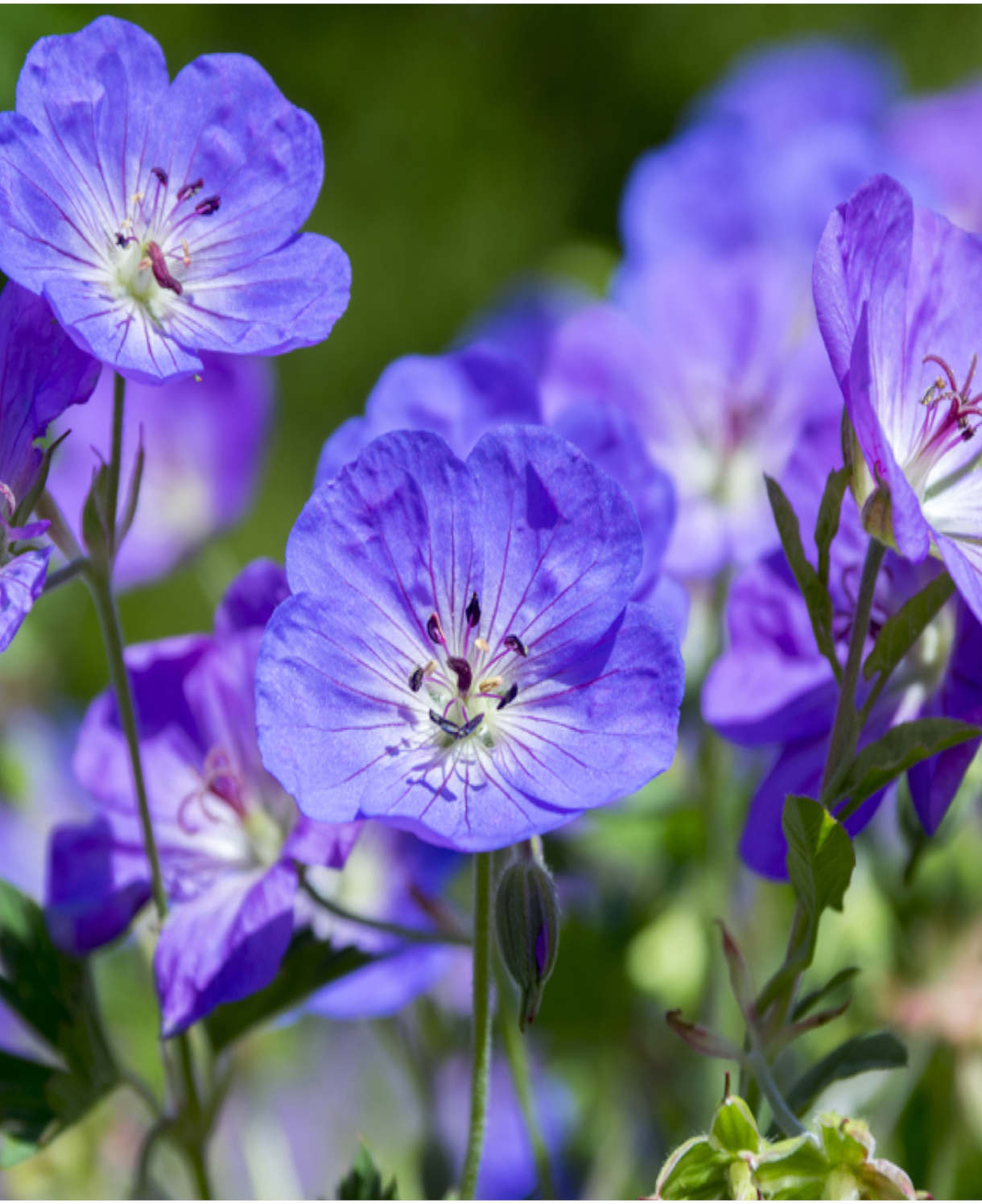
How to care for Nemesia
Pruning and Deadheading
Occasionally trim off dead and fading flowers to keep plants looking attractive and encourage more blooms.
Tender and half-hardy nemesia tend to be grown as annuals, in which case they require no pruning (only removing at the end of the growing season). If you wish to try and overwinter yours, trim lightly before moving undercover, then cut back hard before moving back out in spring.
Hardy varieties left in the ground can pruned in this same way, that is to say trim lightly after flowering then cut back hard in spring.
Watering
Keep container-grown nemesia watered regularly, allowing the top few centimetres of compost to dry out between soakings.
Nemesia in the ground will need to be watered until established, then only in dry spells thereafter.
Cold Protection
Tender or half-hardy nemesia will not survive a winter outdoors. These are usually treated as annuals, though if you wish to overwinter, prune as above and move into a cool frost-free environment such as a cold frame, or unheated greenhouse or conservatory. Bring them outside the following spring once all risk of frost has passed.
Some of the newer hybrids such as the Melody series are hardier, and able to survive outside with no additional protection.
Check individual descriptions for details.
Pests and Diseases
Nemesia tend to be fairly problem free, though can succumb to foot rot and root rot if grown in damp conditions. Choose a well-draining planting spot, or if you have heavy soil, try yours in a container filled with gritty compost. Nemesia overwintering under cover will need the bare minimum of watering, and those left outside can be moved into the rain shadow of a wall (containers) or given a dry mulch of straw or bracken (ground) to help avoid problems.
How to propagate Nemesia
Nemesia is easy to grow from cuttings, which can be taken anytime during the growing season.
- Find non-flowering shoots 5-10cm long and snip off the plant.
- Put them in a plastic bag straight away to prevent drying out.
- Fill a container with a compost mix which is at least 50% perlite (or if you prefer, as we do, 100% perlite).
- Trim the end of the cutting to just below a node (point at which leaves grow).
- Remove the lowest third of the leaves.
- If the remaining leaves are large, cut them in half with a sharp knife (to reduce water lost through transpiration).
- Insert the cuttings into the compost and water lightly. Several cuttings can be put in the same container if there is enough space to do this without them touching.
- Place in a greenhouse or propagating unit if you have one or covered with a plastic bag on a windowsill if not (out of direct sunlight).
- Keep the cuttings misted and occasionally watered until they root. You will know this has happened when roots emerge out of the bottom of the container.
- Gently remove rooted cuttings and pot them into individual pots. Overwinter in a cool yet frost-free environment such as an unheated conservatory, greenhouse, or cold frame, before planting out in late spring (once all risk of frost has passed).
Common Nemesia questions
Does nemesia come back every year?
All the nemesias we sell are perennial, meaning they have the potential to come back after winter. However, of these, many are tender or half-hardy and so will either need winter protection or, more commonly, are treated as annuals. Some newer varieties are fully hardy and will come back after winter with no additional protection.
Is nemesia easy to grow?
Providing it is given a sunny, well-drained spot, nemesia will flower its socks off for at least half the year with very little effort required.
Do you need to deadhead nemesia?
While not essential, regular deadheading can maintain the flowering vigour of nemesia well into autumn.
Do nemesia plants spread?
Nemesia is not known as a spreading plant in the UK as our climate does not offer the conditions it requires to self-seed.





